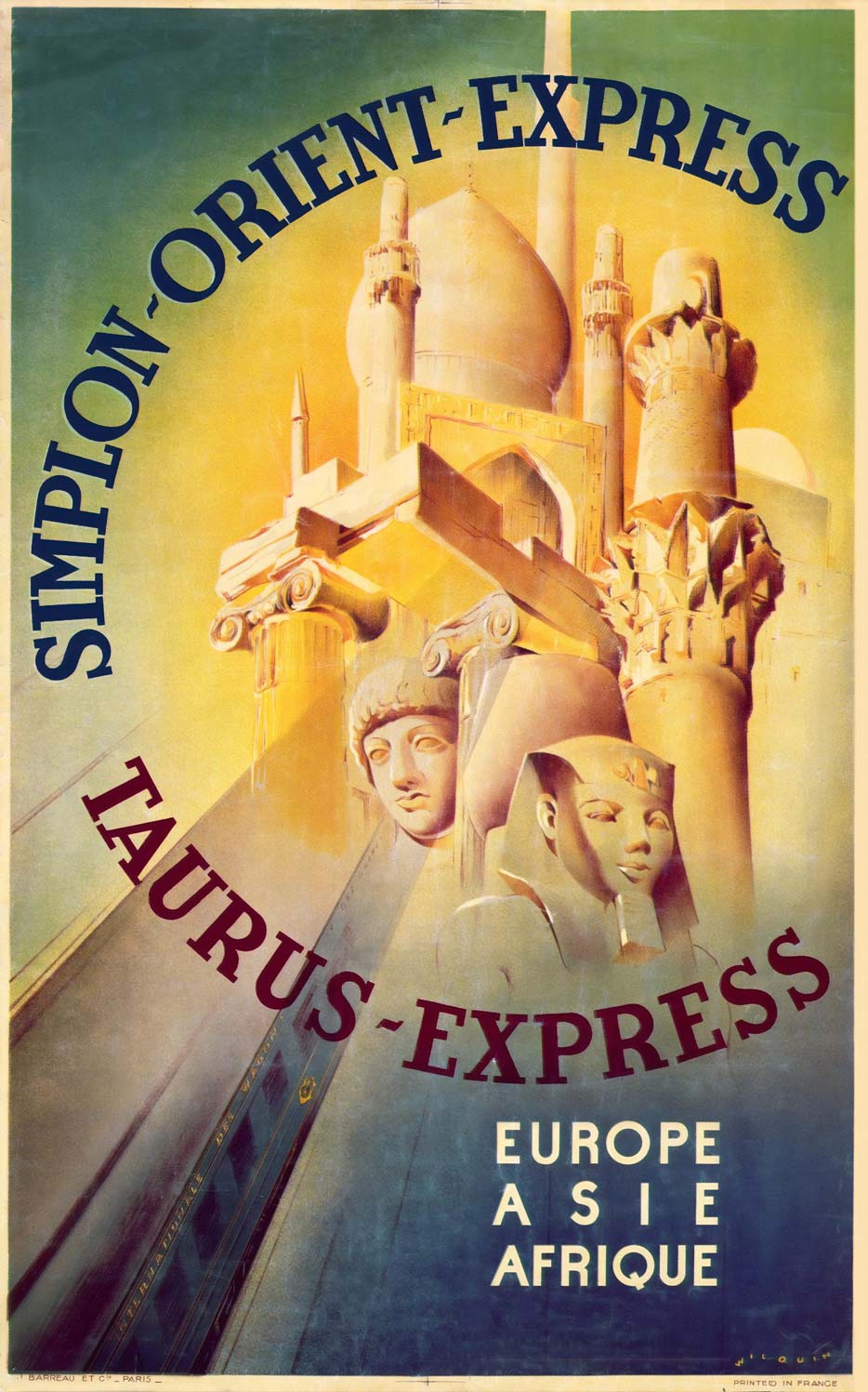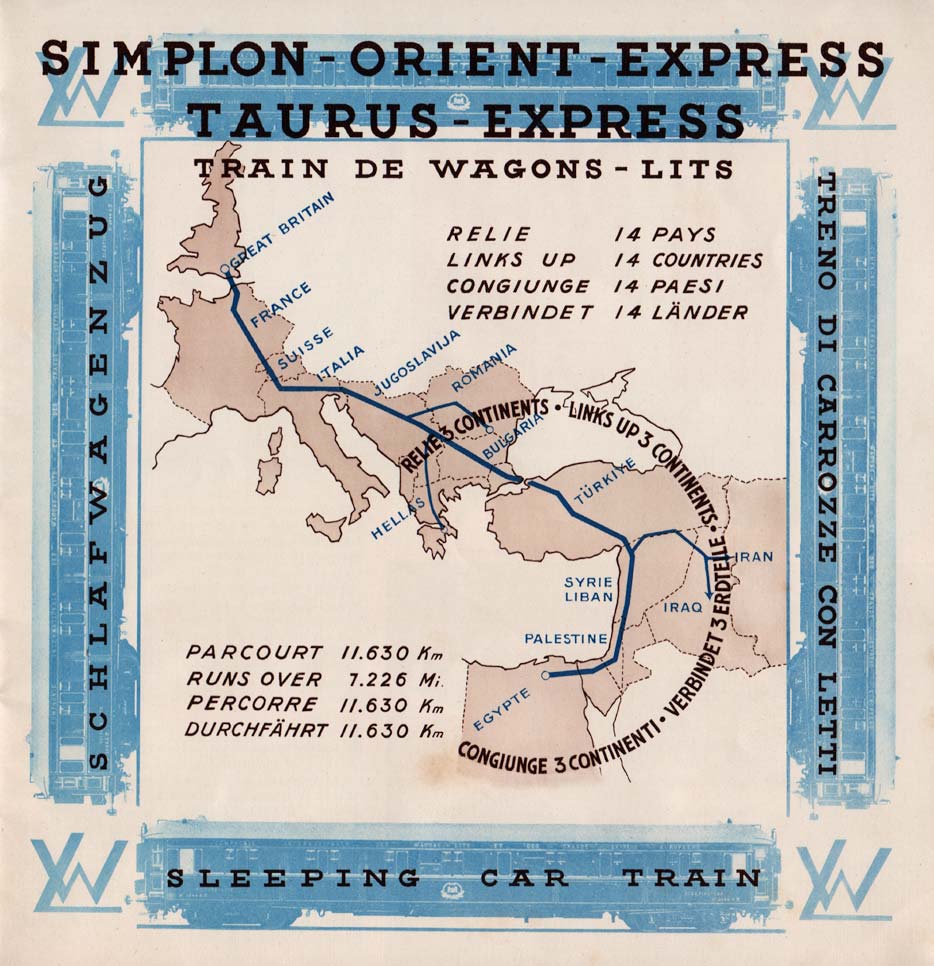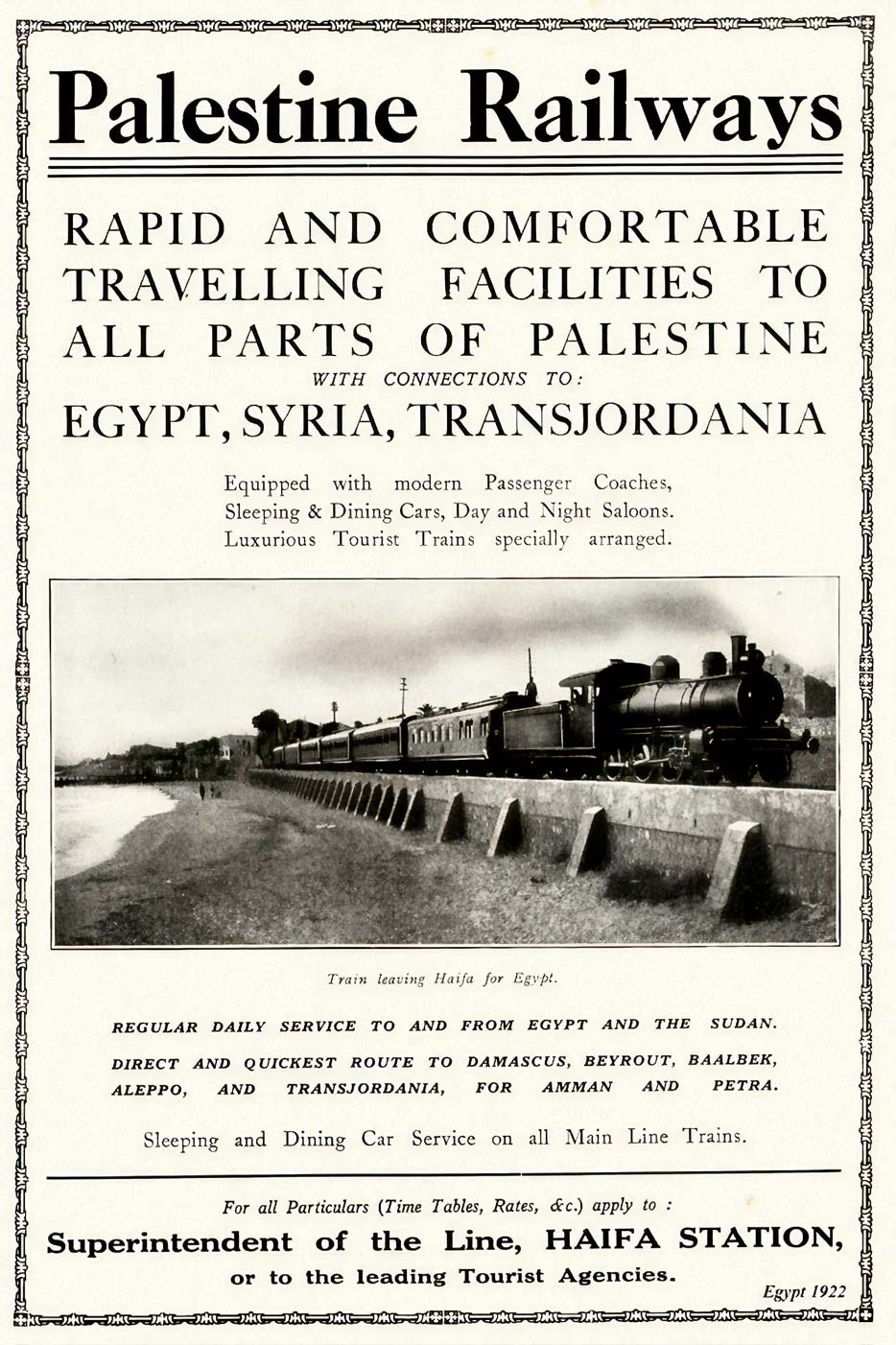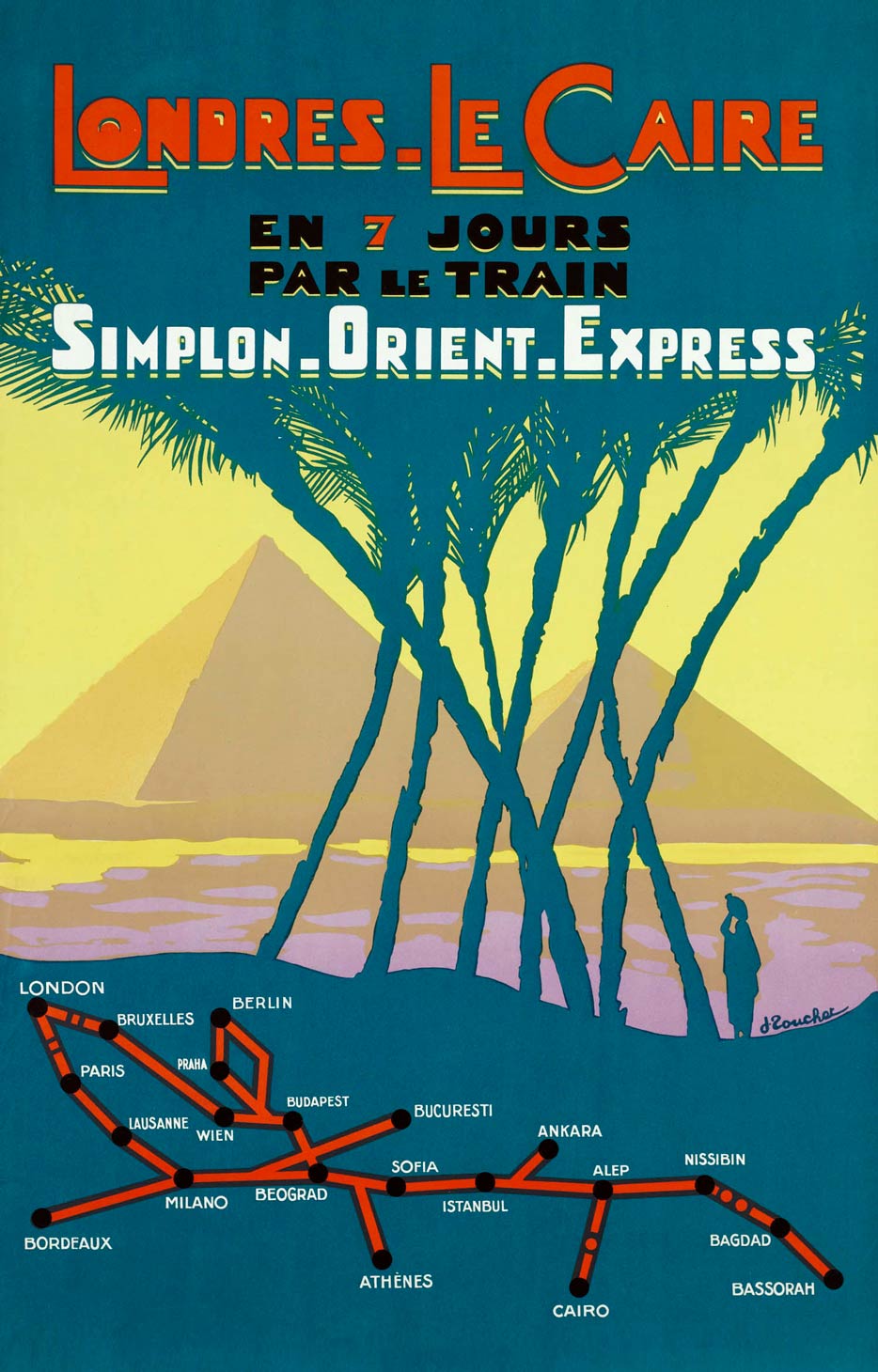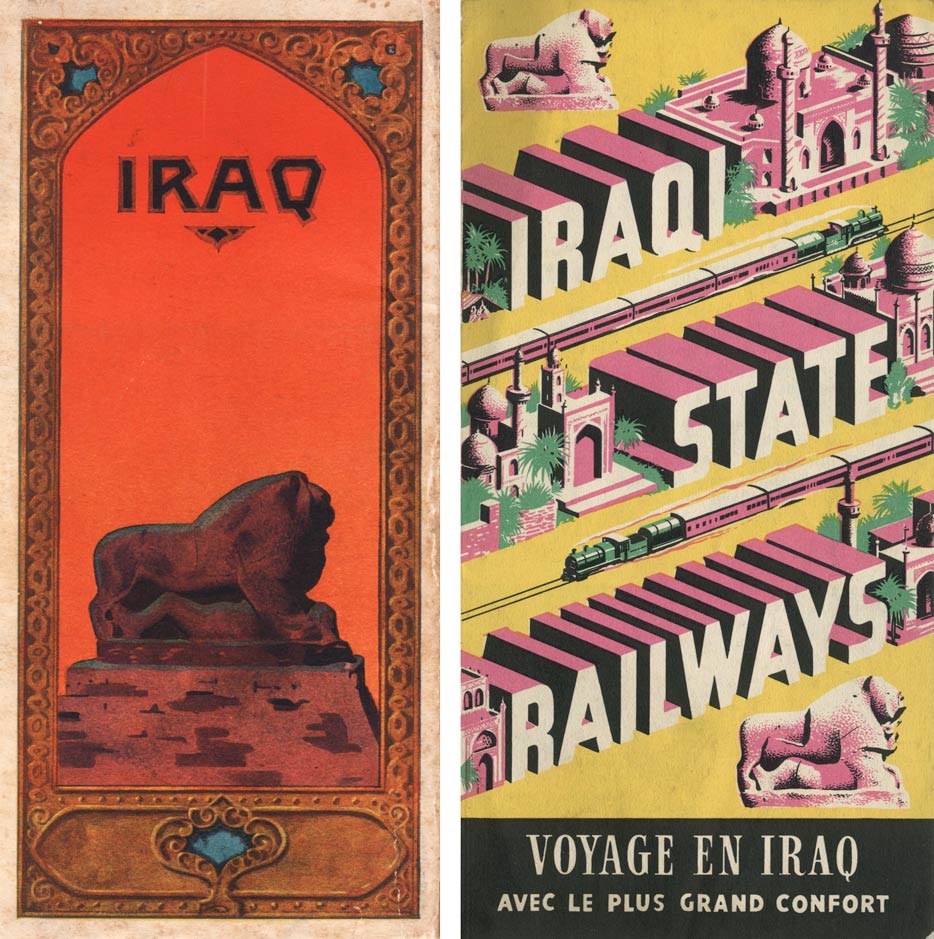Three Continent Train
The Taurus Express to Iraq and Egypt
 Nederlandse versie
Nederlandse versie
From London and Paris to Cairo and Baghdad by train. This became an option when after World War I the Middle East fell into the hands of the British and French, including the Baghdadbahn. This railway was constructed by the Germans, but was not yet finished. Together with the new Turkish state railways, the French sleeping car company Wagons-Lits already started a luxury train service.
In 1930 the Taurus Express was introduced as an extension to the Simplon Orient Express, named after the Taurus Mountains in southern Turkey. Travelers first had to cross the Bosphorus at Istanbul. In Syria connections were provided to Iraq, Palestine and Egypt, requiring several transfers, including taxi or bus services. In the Wagons-Lits advertising, though, the Simplon Orient Express was touted as a three-continent train (Europe, Asia, Africa).
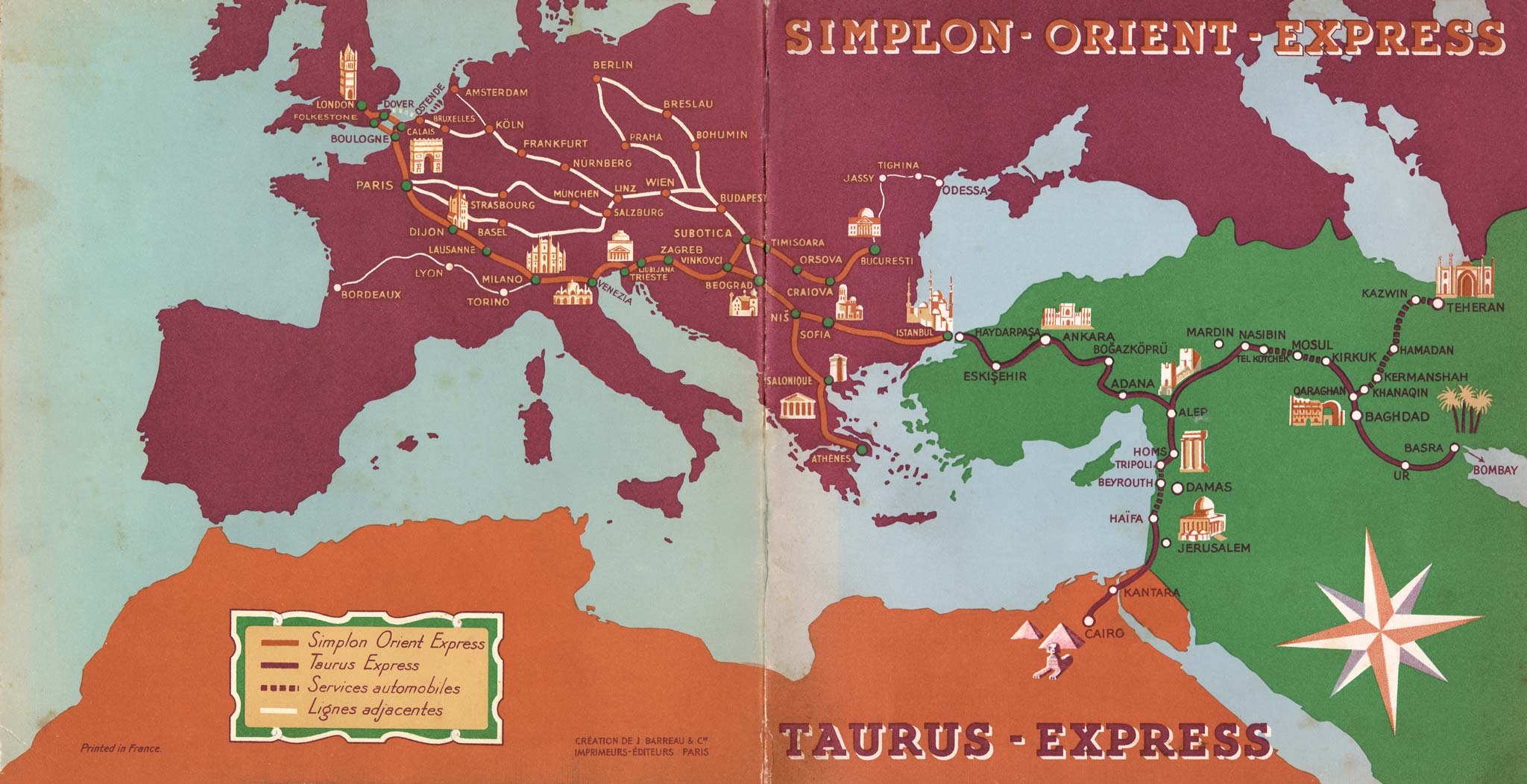
Turkey
During the reign of the last sultans, the railways in Anatolia (Asia Minor) and the Middle East were built by German companies, funded by Deutsche Bank. In the 1920s the new state railways of Atatürk's Republic of Turkey incorporated the Anatolian Railways, while the railways in Syria fell into French hands and those in Palestine and Iraq came under British control. As a result, the road to the east was opened up for Wagons-Lits.
In 1926 Turkey and Wagons-Lits signed a 40-year contract for the operation of luxury trains with sleeping and dining cars. First of all, the Anatolia Express started running to Ankara, the new Turkish capital. The new service was mostly used by senior officials and Western diplomats. Another branch of the Anatolian Railways led to Konya in south-western Turkey. It was the starting point of the Bagdadbahn to Syria and — ultimately — Iraq. The Turkish section of this railway also came under the management of the state railways (TCDD). On to Adana the railway runs through the high parts of the Taurus Mountains, name giver of the Taurus Express.
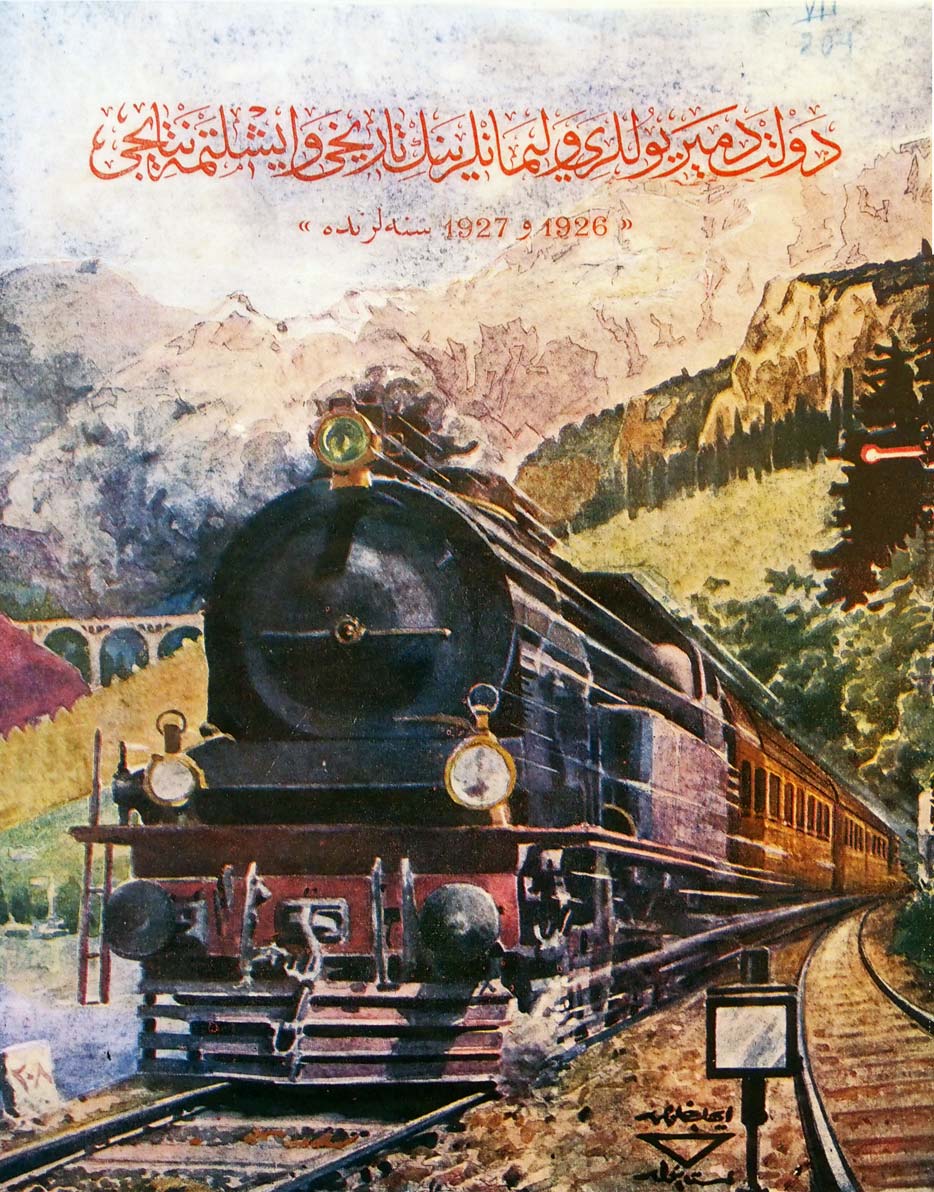
A 1926-27 Turkish brochure (still using Arabic-Turkish script) marks the annexation of the Anatolian Railways by the Turkish State Railways. The cover showed a TCDD 3700 steam locomotive by İhap Hulusi Görey. A slightly later brochure for the Simplon Orient and Taurus Express indicated that these trains connected three continents, traversing 14 countries and covering a distance of 11,630 kilometers.
Wagons-Lits has invited journalists from England, France, Switzerland, Serbia and Turkey for the inauguration of its luxury sleeper service to Egypt. Consequently, on a beautiful morning, the six journalists, like the six kings in Voltaire's 'Candide' meeting in Venice, meet each other at the Haydarpaşa station on the Asian bank of the Bosphorus to establish this eastern railway record.
The steaming train is waiting for us — new, clean, comfortable, luxurious. On the platform, representatives of the Anatolian Railway and Wagons-Lits personally welcome the first passengers of the new overland route. At 9 o’clock in the morning the convoy with its luxury sleeping and dining cars sets itself in motion.
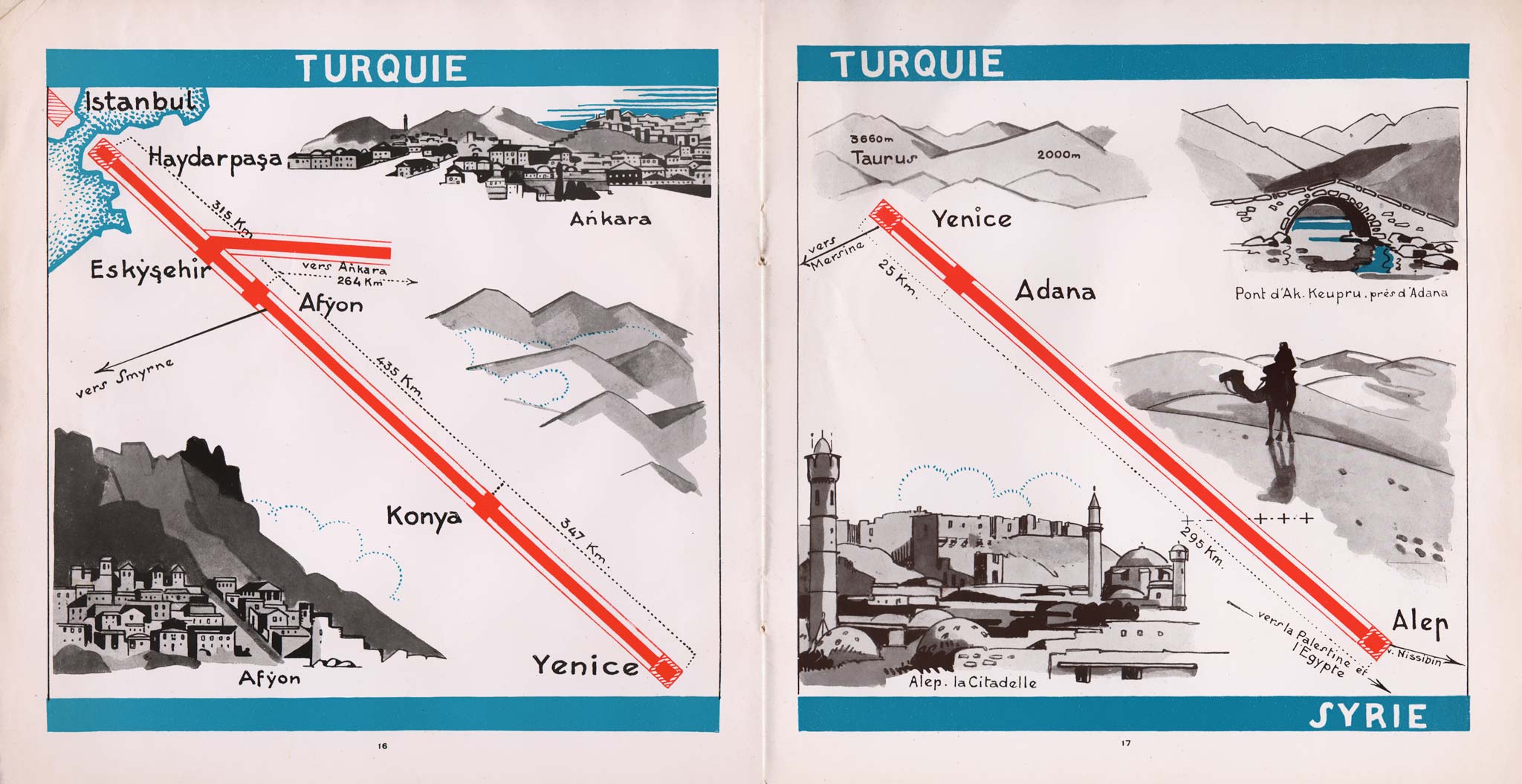
Syria
From 1927 onwards, Wagons-Lits ran sleeping cars to Aleppo in northern Syria. In the promotional material for the train service, the imposing Citadel of Aleppo featured as a landmark. This castle attracted early tourists, while still retaining its military function until the Second World War. Joseph de La Nézière – an Orientalist painter by origin – depicted the crowds at the foot of the Citadel on his poster. Interestingly, the poster advertises the Simplon Orient Express, while in reality this train only ran as far as Istanbul.

When non-stop nighttime running through Anatolia decreased the travel time in 1930, the Taurus Express was introduced: a direct luxury train from Istanbul to the Middle East, connecting to the Simplon Orient Express. After Aleppo, it ran twice a week to Tripoli in Lebanon, where passengers could travel onwards to Palestine and Egypt. On two other weekdays the train continued to eastern Syria, with a connection to Baghdad.
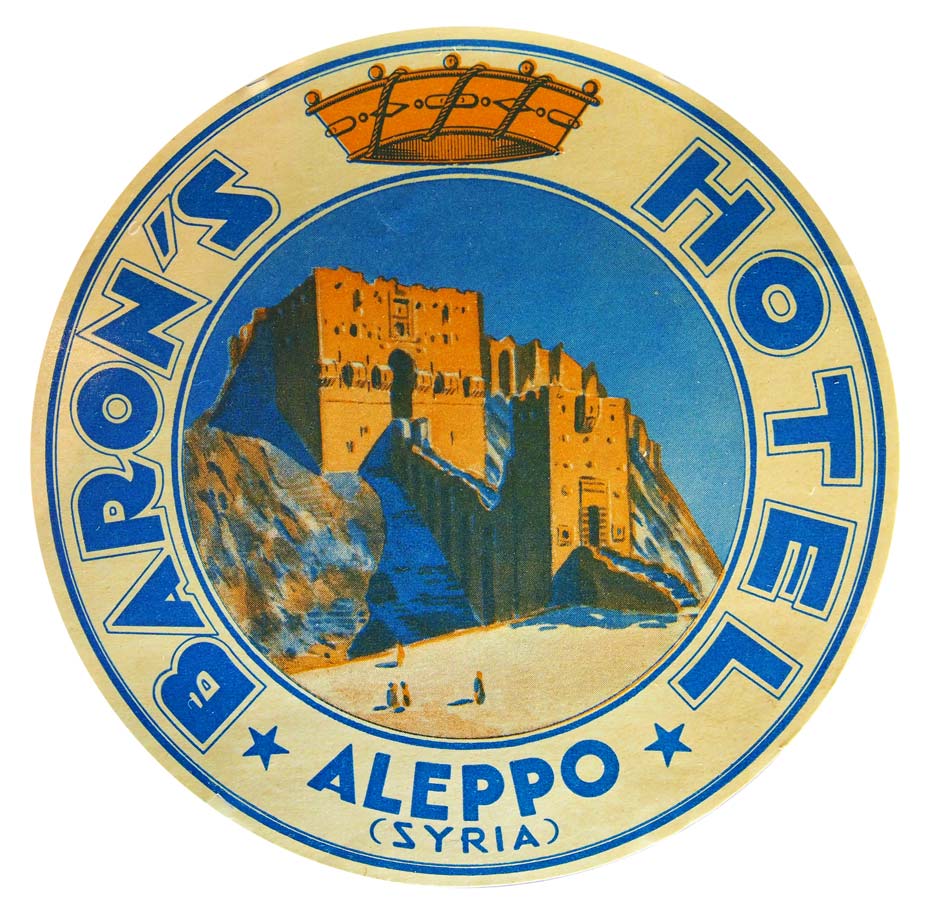
At Aleppo the Baron Hotel served as a stopping place for Western transit travelers since 1909. Initially most guests were German railway engineers and British archaeologists. One of them was T.E. Lawrence (Lawrence of Arabia). As a British intelligence officer during the First World War he was committed to an independent pan-Arab state. In 1920 this state was proclaimed from the Baron's balcony, but it was short-lived. Syria and Iraq became French and British mandates. Around 1930 Agatha Christie stayed at the Baron Hotel on the way to her husband Max Mallowan, who worked in the Iraqi desert as an archaeologist. Her book Murder on the Orient Express starts at Aleppo.
…The taxi takes me to a strange little station, and presently a large and important blue sleeping-car comes along behind a vast puffing engine. A conductor in chocolate uniform leans out. Madame's baggage is handed up, Madame herself is hoisted with difficulty on to the high step from the permanent way… The train starts! I follow the conductor along the corridor. He flings open the door of my compartment.
The bed is made. Here, once more, is civilization. Le camping is ended. The conductor takes my passport, brings me a bottle of mineral water, says: 'We arrive at Alep at six tomorrow morning. Bonne nuit, Madame.' I might be going from Paris to the Riviera! It seems strange, somehow, to find a Wagon Lit here in the middle of nowhere… Alep! Shops! A bath! My hair shampooed! Friends to see!
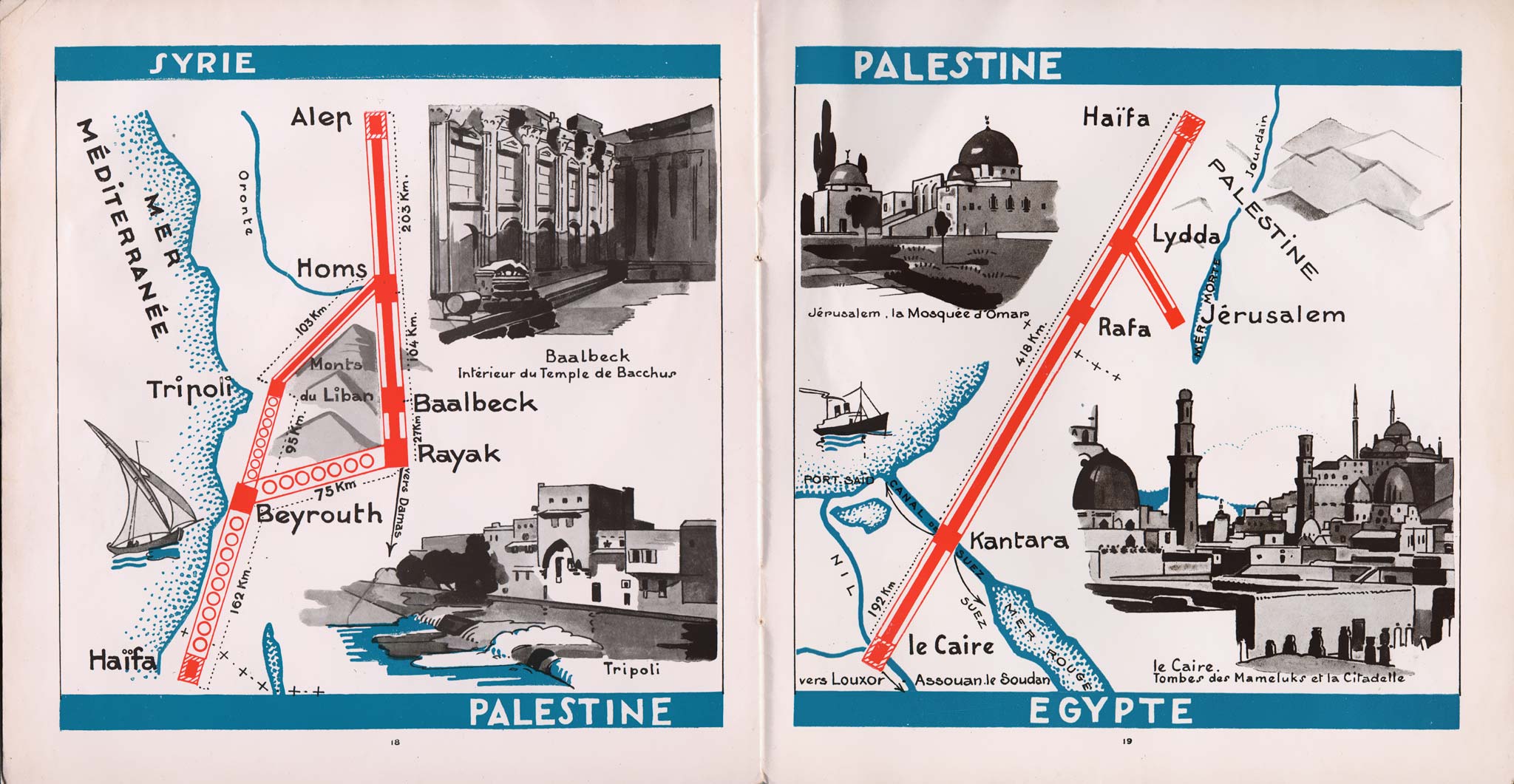
Palestine
From 1928 onwards Wagons-Lit also provided a link to Palestine and Egypt. However, the Taurus Express from Aleppo only came as far as Tripoli in Lebanon. From there a Rolls Royce bus of Nairn Transport took the travelers to Haifa in northern Palestine. In the absence of roads, the bus drove parts on the beach; this 250 km journey took 10 hours. The railway connecting Palestine with Egypt was built by the British army during the First World War. In 1920 Palestine became a British mandatory. The Palestine Railways were opened to the public and Wagons-Lits established a sleeping and dining car service.
In the 19th century, tourism in the Holy Land was mostly limited to pilgrims, but it grew strongly during the British mandate. Travelers not only visited Palestine for religious reasons, but also for the landscape. In addition, Palestine increasingly attracted Jewish tourists from Western countries. For Zionists, tourism was not only of economic but also of political importance: a positive image of the Jewish community in Palestine would contribute to the formation of their own state.
From Tripolis passengers are conveyed by autocar via Beirut to Haifa, whence sleeping-cars again run on through Palestine and onward via Raja and Kantara to Caïro. Apart from the direct route via Triopli and Haifa... there are circular tours offering three different plans for visiting Egypt, the Nile, and Palestine.
From the land of the Bible and the Crusades, the traveller will return with a wealth of splendid visions impressed upon his mind. The oldest vestiges of the House of Israel, and the hallowed relics of the Christian Dawn, will seem quite recent when compared with the time-honoured monuments of the ancient Pharaohs.
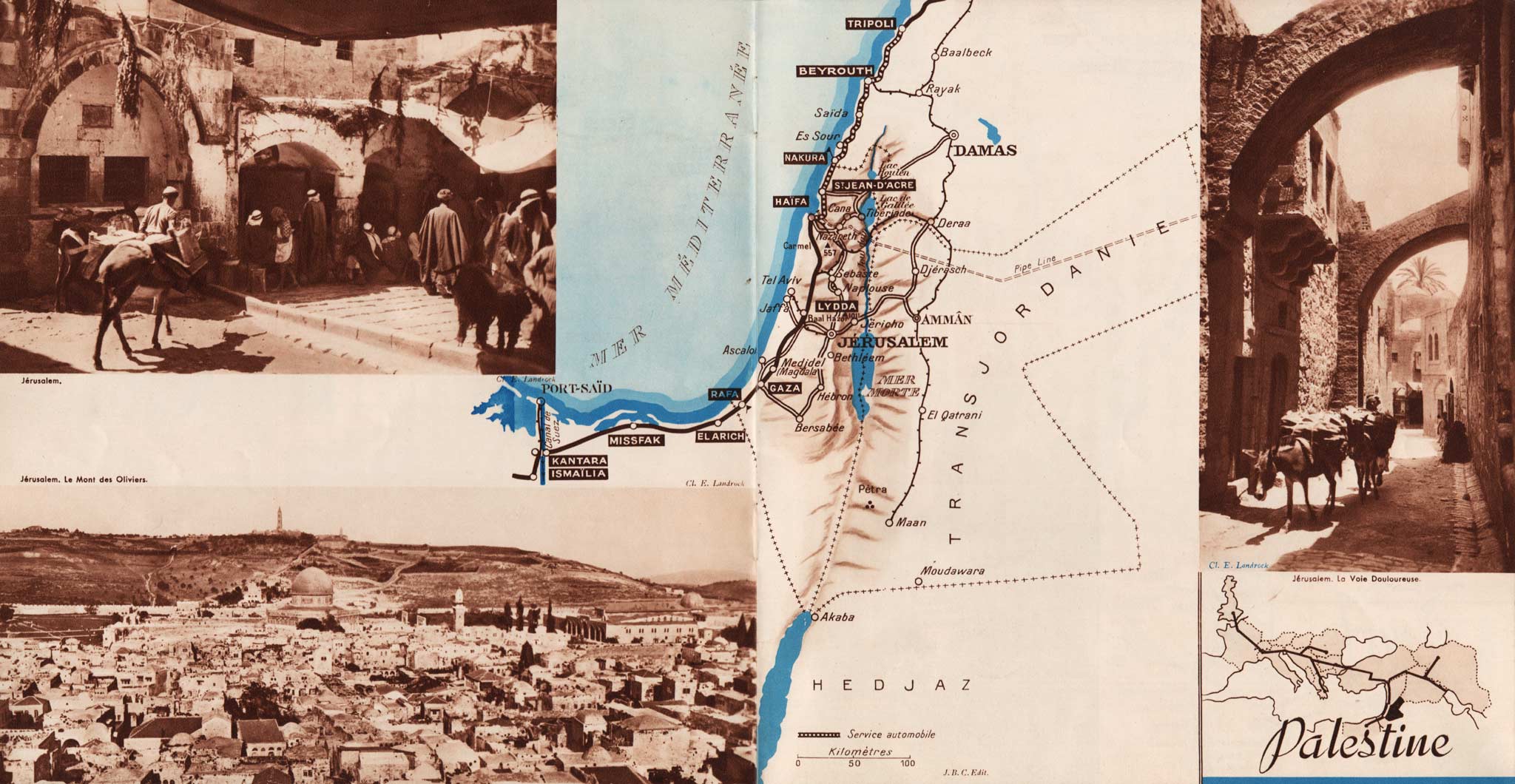
Egypt
On a poster with with palm trees and pyramids, created around 1930 by Jacques Touchet, a red line seems to run all the way from London to Cairo. A journey on the Simplon Orient Express to the pyramids of Egypt was only possible on paper. A direct connection was the final goal, but it was not realized until the 1940s, and remained in operation for only a few years.
In the 1930s Palestinian Railways provided service via Gaza to Kantara on the Suez Canal. Because there was no bridge there yet, a final crossing and transfer followed. From London, it had taken five trains, three ships and a bus, but after seven days passengers actually arrived in Cairo.
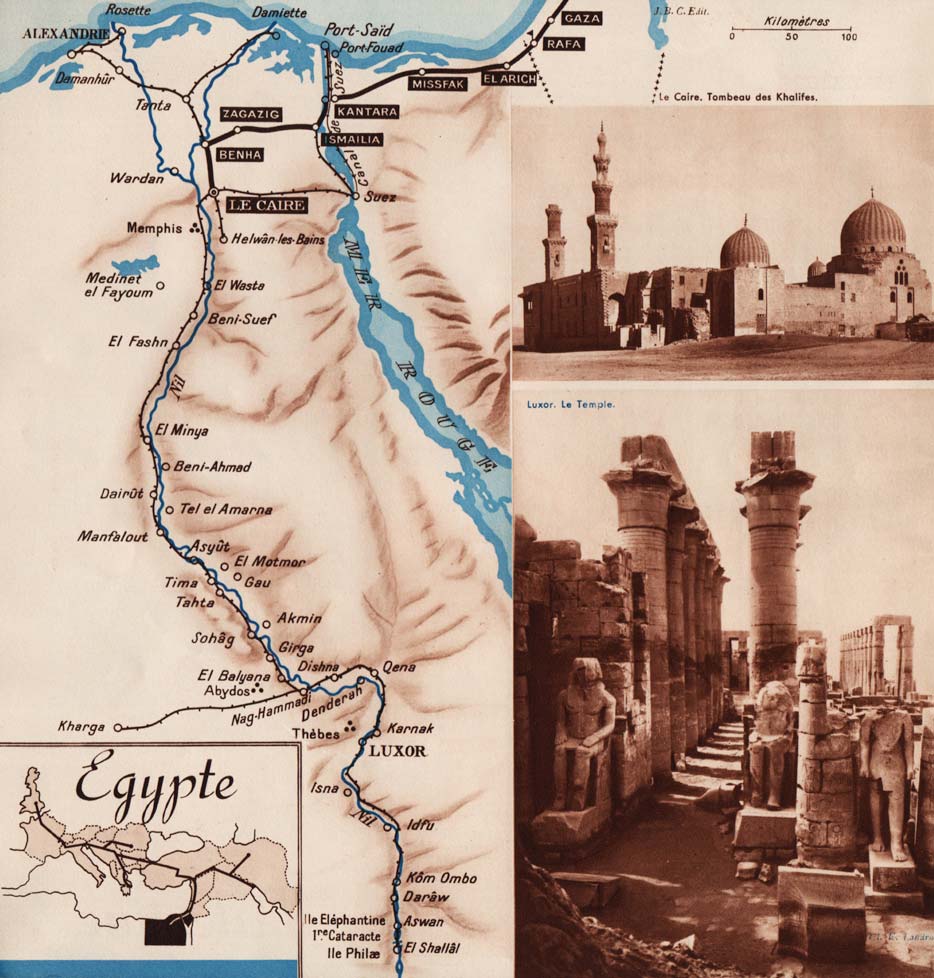
Egypt was an early travel destination for wealthy tourists. Wagons-Lits had already been present since 1894 with luxury hotels and special refrigerated carriages between Cairo and Luxor. After the discovery of Tutankhamun's tomb in 1922, interest in ancient Egypt only increased. A Wagons-Lits brochure for the new land connection, illustrated by J. Briquemann, picked op on this.
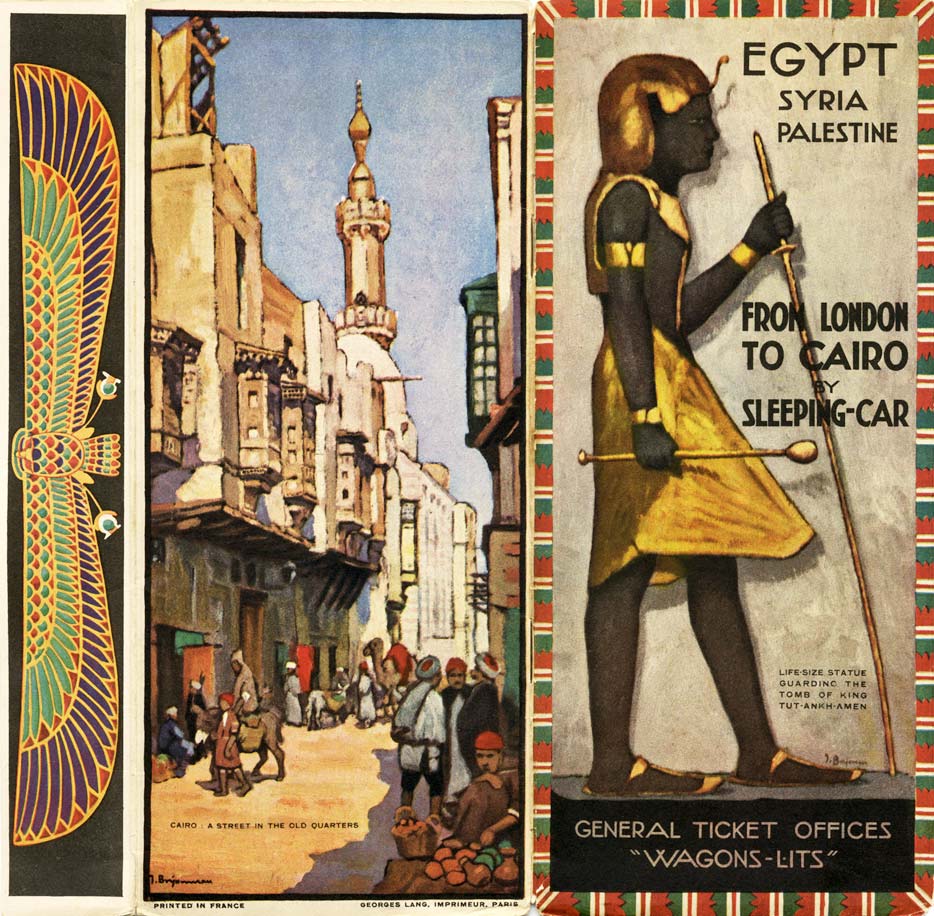
Soon we reached Acre (Palestine) and then Mount Carmel, overlooking Haifa. From there we travelled by sleeping car and Pullman carriage to the Egyptian town of Kantara, where we crossed the Suez Canal by ferry on our way to Cairo and Luxor… All in a few days, including a visit to the fabulous treasures of Tutankhamun, Karnak and Thebes and finally the tombs of the Valley of the Kings!
This new rail link soon brings Syria, Lebanon, Palestine, Egypt, Sudan and subsequently all of Africa within easy reach of important tourists and business people who otherwise, being afraid of seasickness, would never come. This service offers them a direct overland route, taking just seven days — and soon only six — at no more cost than a sea voyage. And what a wonderful, unique and amazing journey takes them there!
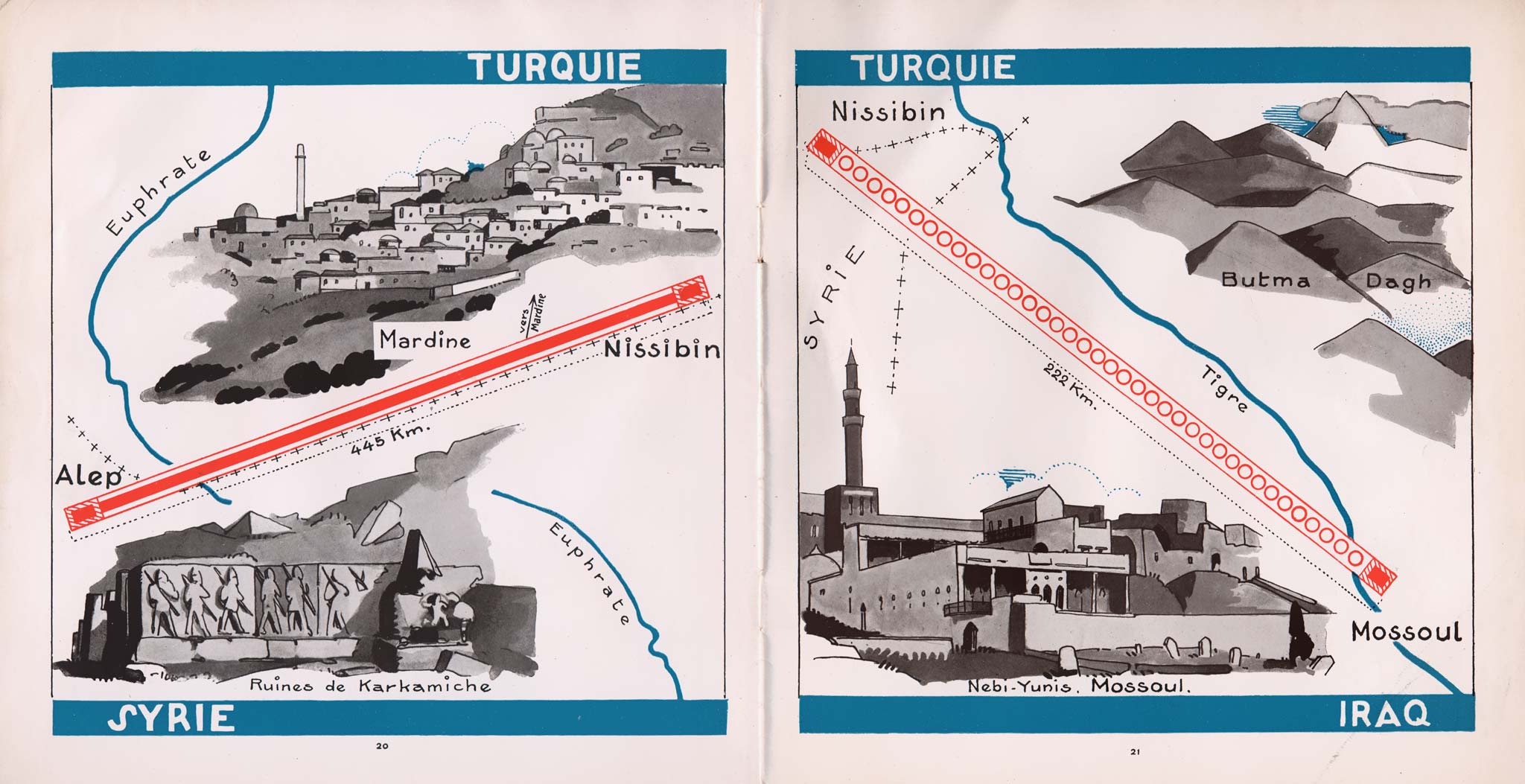
Iraq
Another branch of the Taurus Express led from Aleppo to — eventually — Iraq. On this route, the Baghdad Railway formed the new Turkish-Syrian border. In the early years the line was only operated to Nusaybin in eastern Turkey, and it was extended to Tall Ziwan in eastern Syria a few years later. From there, Ford automobiles took the passengers to Kirkuk in Iraq. The last leg to Baghdad was accomplished by narrow-gauge railway. Nevertheless, a poster promoted the circuitous journey as safe, quick and economical.
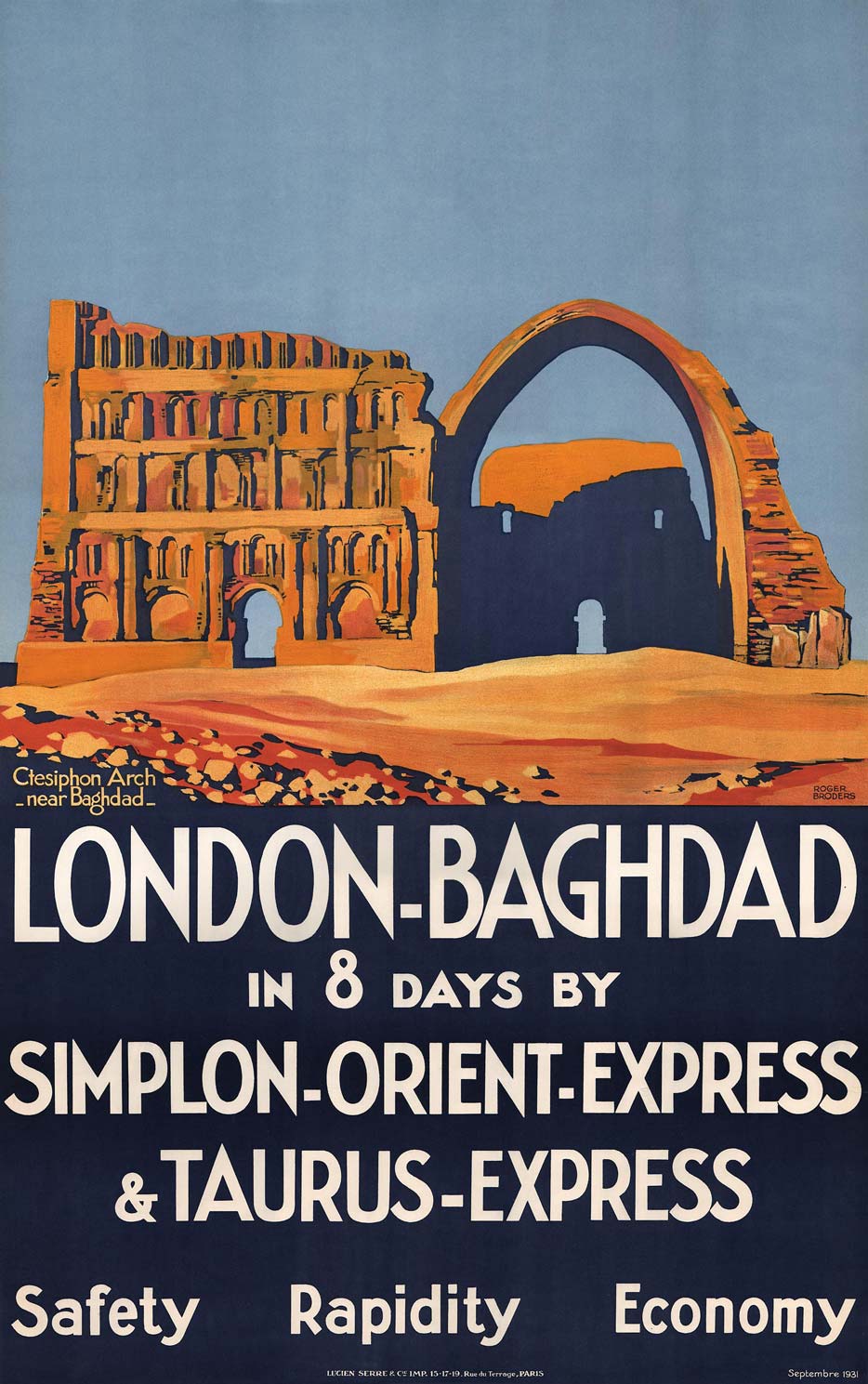
Targeted to British travelers, the poster was issued by the French Paris-Lyon-Mediteranée (PLM) railway company. Their favorite poster artist was Roger Broders, best known for his Art Deco scenes of Côte d'Azur beaches and Alpine ski resorts. In this case Broders depicted the Arch of Ctesiphon (Taq Kasra), an important archeological monument near Baghdad, without any people. While normally the PLM company sponsored his travels, it is unknown wether Broders really visited Iraq or used a photograph. His distinctive style with simple lines and bold colors can be recognized, though.
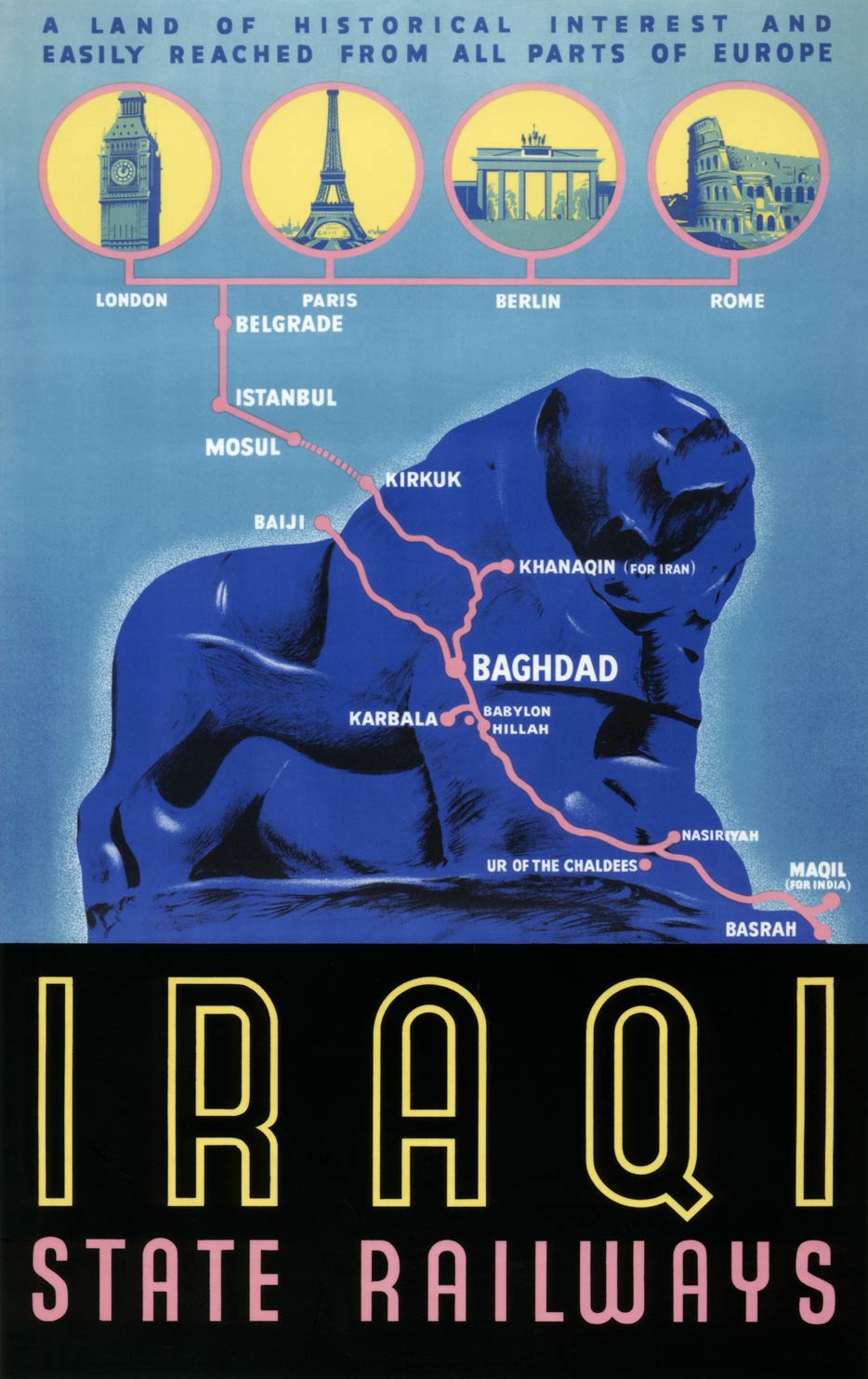
Iraq, taken by the British from the Ottomans in World War I, became an independent kingdom in 1932. In the years that followed the Iraqi State Railways took over the completion the Baghdad Railway form the British military. The new Iraqi railways not only focused on tourists who came to visit the archaeological treasures of Babylon and Nineveh. They also welcomed through-travelers to India and the Far East. This overland route offered connections to ships across the Persian Gulf via Basra.
Travellers via Iraq have an opportunity of visiting a very large variety of places of interest to both tourists and business men, and this route has the advantage of costing little more than the long and uninteresting journey from or to India by sea. The overland route is no longer an adventurous undertaking. It is now a comfortable and safe journey with regular services.
Half way across the desert is the border post (Rutbah Wells) provided with rest rooms, restaurant, electric installations and wireless communication. At Basra the Railway Administration have built a Rest House complete in all details and including a well furnished Dining Room, Lounge and Billiard Room; whilst at Mosul there is also a modern equipped Rest House with Dining Room and Lounge.
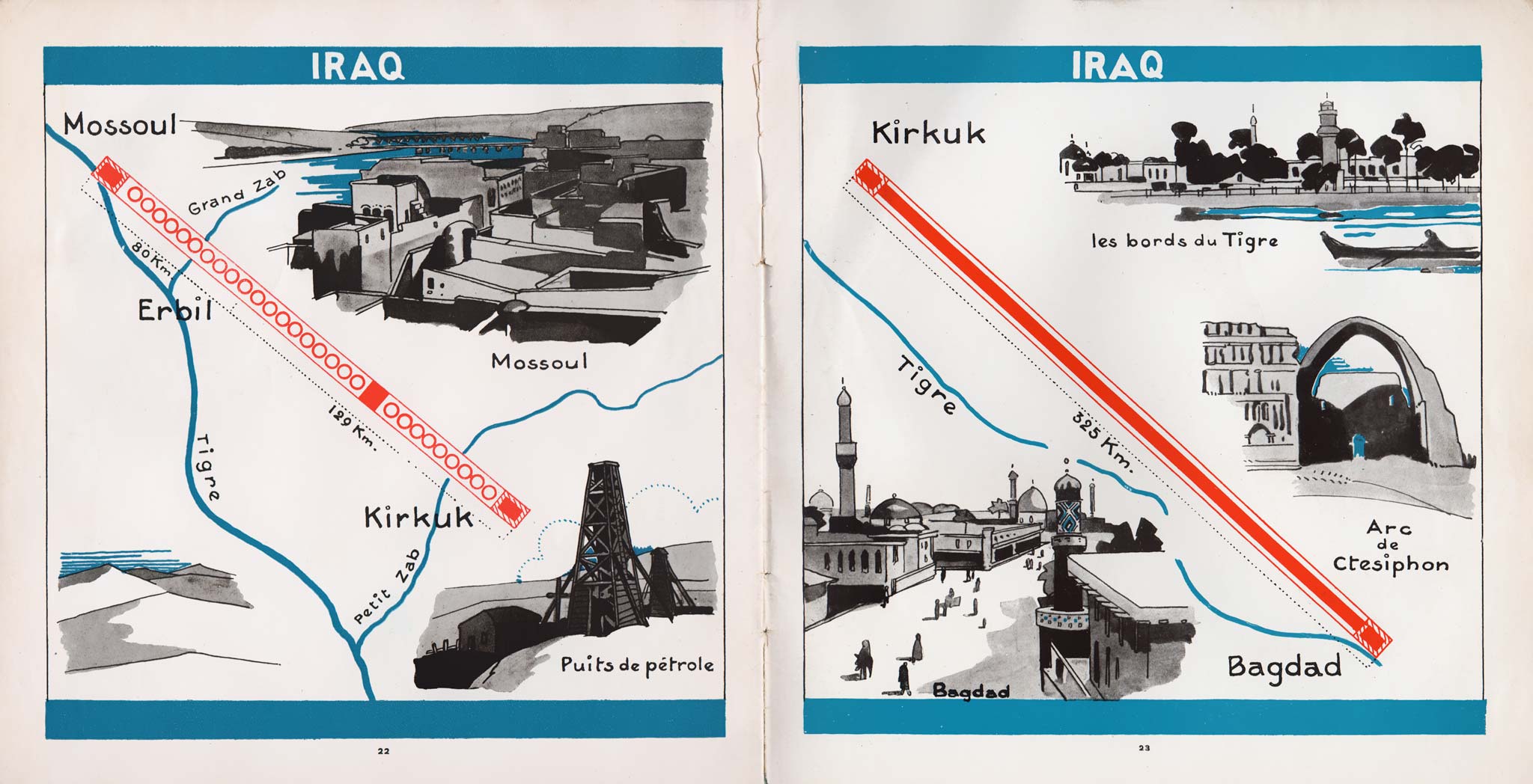
Aftermath: direct connections
In 1936 construction of the Baghdad Railway had progressed from Syria to the Iraqi border, while from the other direction the railway line was in operation between Baghdad and Baiji. Mosul was reached in 1939 and a year later the final gap was closed. In July 1940 the first direct Taurus Express arrived from Istanbul. Construction of the Baghdad railway had taken almost 40 years.

The first decades a regular train service connected Istanbul and Baghdad, initially with streamlined steam locomotives and using diesel traction from the 1960s onwards. Later on, conflicts in the Middle East caused many interruptions, which continue to this day.
In 1942 the missing rail link between Tripoli, Beirut and Haifa was completed, making Cairo directly connected to Istanbul. Finally a poster could be published with a continuous red line between Turkey and Egypt.
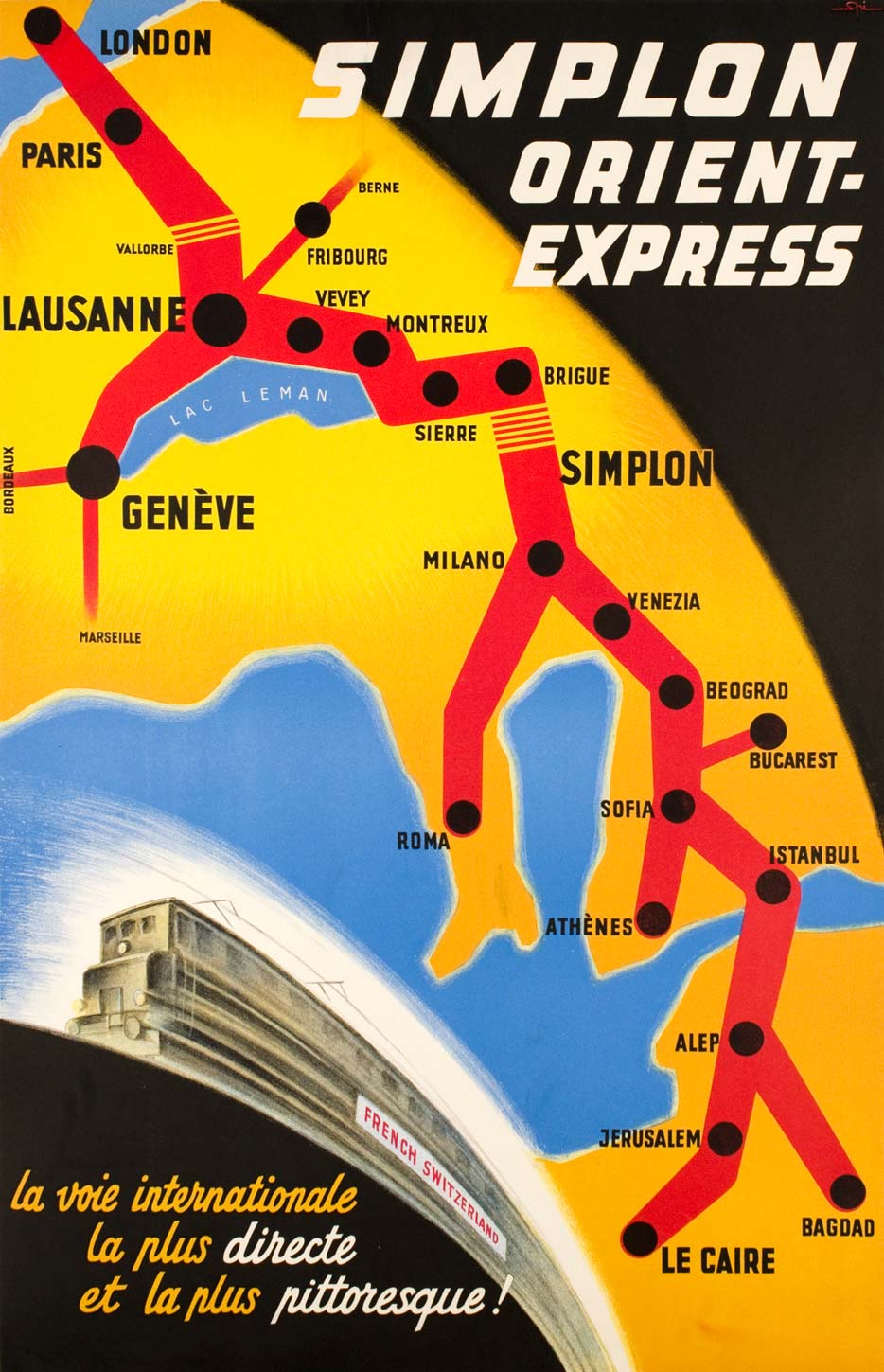
After the founding of the State of Israel and the subsequent conflicts, the direct connection fell already into disuse in the early 1950s. Meanwhile, the rise of air traffic made the restoration of the direct rail link less important.
